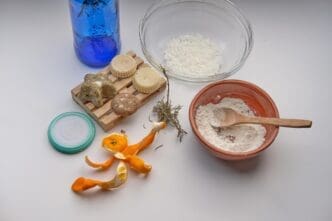A Quick Takeaway
The Story Behind the Trend
How to Make It Work for You
The Community View
Transforming your living space into a sanctuary of well-being is an essential step for anyone seeking to enhance their physical and mental health. By systematically addressing key environmental factors within your house, you can proactively reduce exposure to toxins, improve air and water quality, and cultivate a calming atmosphere that supports your overall wellness, starting today. This comprehensive checklist provides practical, evidence-based strategies to create a healthier home environment for you and your family.
Why a Healthy Home Environment Matters
Your home is more than just a shelter; it’s the primary environment where you spend the majority of your time, directly influencing your health outcomes. Poor indoor air quality, hidden toxins, and a cluttered, stressful atmosphere can contribute to a range of issues, from allergies and respiratory problems to poor sleep and increased anxiety. Conversely, a thoughtfully curated healthy home can boost immunity, improve mood, enhance focus, and provide a restorative retreat from the outside world.
Making small, consistent changes throughout your home can collectively lead to significant improvements in your overall quality of life. Understanding the impact of your surroundings empowers you to make informed choices that foster a truly supportive living space. This proactive approach is an investment in your long-term health and happiness.
Air Quality: Breathe Easier
Indoor air can often be more polluted than outdoor air, making air quality a critical component of a healthy home. Addressing airborne contaminants is fundamental to preventing respiratory issues and promoting overall well-being.
Reduce Indoor Pollutants
Proper ventilation is key to flushing out stale air and reducing the concentration of pollutants. Regularly open windows and doors, even for a few minutes a day, to allow fresh air to circulate throughout your home. Utilize exhaust fans in kitchens and bathrooms to remove moisture and cooking fumes, which can contribute to mold growth and poor air quality.
Minimize the use of conventional cleaning products, synthetic air fresheners, and aerosol sprays, as these often release volatile organic compounds (VOCs) into the air. Opt for natural, unscented alternatives or make your own cleaners with ingredients like vinegar and baking soda. If anyone in the household smokes, encourage them to do so outside to prevent harmful second-hand smoke from lingering indoors.
Enhance Air Purity
Investing in a high-quality air purifier with a HEPA filter can significantly reduce allergens, dust, pet dander, and other airborne particles. Place purifiers in rooms where you spend the most time, such as bedrooms and living areas. Regular cleaning and filter replacement are essential for optimal performance.
Consider introducing certain houseplants known for their air-purifying qualities, such as snake plants, peace lilies, and spider plants. These natural filters can help absorb common indoor toxins and release oxygen, contributing to a fresher environment. However, remember that plants alone are not a substitute for proper ventilation and air purification systems.
Regular dusting with a damp cloth and vacuuming with a HEPA-filtered vacuum cleaner can prevent dust and allergens from accumulating. Focus on areas where dust tends to settle, including carpets, upholstery, and hard-to-reach corners. Washing bedding weekly in hot water also helps to eliminate dust mites.
Water Quality: Hydration and Beyond
Clean water is essential not only for drinking but also for bathing and cooking. Ensuring your water supply is free from contaminants is a vital aspect of a healthy home.
Filter Your Drinking Water
Even if your tap water is deemed safe, it may still contain trace contaminants like chlorine, lead, or microplastics that can impact taste and long-term health. Consider installing a water filter on your kitchen tap, using a filtered water pitcher, or investing in a reverse osmosis system for superior purification. Consistent access to clean, good-tasting water encourages better hydration, which is fundamental for every bodily function.
Consider Shower Filters
Chlorine in shower water can strip natural oils from your skin and hair, and it can also be inhaled as steam. Installing a shower filter can reduce chlorine exposure, potentially leading to healthier skin, softer hair, and fewer respiratory irritations. This small change can make a noticeable difference in your daily routine.
Minimizing Toxins: What You Bring In
Many everyday products and materials in our homes can off-gas harmful chemicals. Being mindful of what you bring into your living space is crucial for reducing your toxic load.
Cleaning Products
Shift towards non-toxic, eco-friendly cleaning solutions whenever possible. Many effective cleaners can be made at home using simple ingredients like white vinegar, baking soda, and essential oils. When purchasing products, look for certifications from reputable organizations that guarantee minimal harmful chemicals. This reduces exposure to irritants and improves indoor air quality.
Personal Care Products
Your bathroom cabinet can be a source of numerous chemicals that absorb into your skin. Scrutinize labels on shampoos, conditioners, lotions, and cosmetics, avoiding ingredients like parabens, phthalates, sulfates, and synthetic fragrances. Choose products with fewer, more natural ingredients to minimize your exposure to potential endocrine disruptors and allergens.
Furniture and Decor
Be aware of the materials used in your furniture, carpets, and paints. Many new items can off-gas VOCs for extended periods, contributing to poor indoor air quality. When possible, opt for furniture made from solid wood, natural fibers, or those certified as low-VOC. Choose low-VOC paints and allow for ample ventilation during and after any renovation projects.
Light and Sound: Sensory Well-being
The sensory environment of your home profoundly affects your mood, energy levels, and sleep quality.
Optimize Natural Light
Maximize natural light by keeping windows unobstructed and using lighter window treatments. Natural light helps regulate your circadian rhythm, boosting mood and energy during the day and promoting better sleep at night. Position workspaces and reading nooks near windows to take advantage of daylight.
Manage Artificial Light
At night, shift to warmer, lower-intensity artificial lighting to support melatonin production and prepare your body for sleep. Avoid excessive exposure to blue light from screens in the hours leading up to bedtime, or use blue-light-blocking glasses. Consider smart lighting systems that can adjust color temperature throughout the day.
Control Noise Levels
Create quiet zones in your home where you can relax and focus without disruption. Use soft furnishings, rugs, and curtains to absorb sound and reduce echoes. If you live in a noisy area, consider soundproofing solutions or use white noise machines to mask disruptive sounds, promoting a more peaceful atmosphere.
Declutter and Organize: Mental Clarity
A cluttered home often translates to a cluttered mind, contributing to stress and anxiety. Embracing minimalism and effective organization can significantly improve mental well-being.
The “Less is More” Philosophy
Regularly declutter your home, donating, recycling, or discarding items that no longer serve a purpose or bring you joy. This process not only frees up physical space but also reduces visual noise, creating a calmer and more aesthetically pleasing environment. A simplified space requires less maintenance, giving you more time for activities you love.
Functional Organization
Once decluttered, establish a functional organization system where every item has a designated place. Use bins, shelves, and drawer dividers to keep things tidy and easily accessible. Consistent organization reduces stress, improves efficiency, and helps maintain a sense of order and peace in your home.
Green Spaces & Nature Connection
Bringing elements of nature indoors and ensuring access to outdoor spaces can profoundly impact your psychological well-being.
Indoor Plants
Beyond their air-purifying benefits, indoor plants have been shown to reduce stress, improve mood, and increase focus. Their presence connects you to nature, even when indoors, fostering a sense of calm and vitality. Choose plants that thrive in your home’s light conditions and are safe for pets if you have them.
Outdoor Access
Make an effort to spend time in your garden, on a balcony, or in a nearby park regularly. If outdoor space is limited, bring natural elements indoors, such as wood, stone, and natural textures. Opening windows to hear birdsong or feel a breeze can also enhance your connection to the natural world, promoting relaxation and rejuvenation.
Embrace Your Healthy Home Journey
Creating a healthy home environment is an ongoing journey, not a one-time task. By systematically addressing air quality, water purity, toxin reduction, sensory input, and organization, you are making a profound investment in your personal well-being. Start with a few small changes today, and gradually build towards a home that truly nourishes your body and mind.








